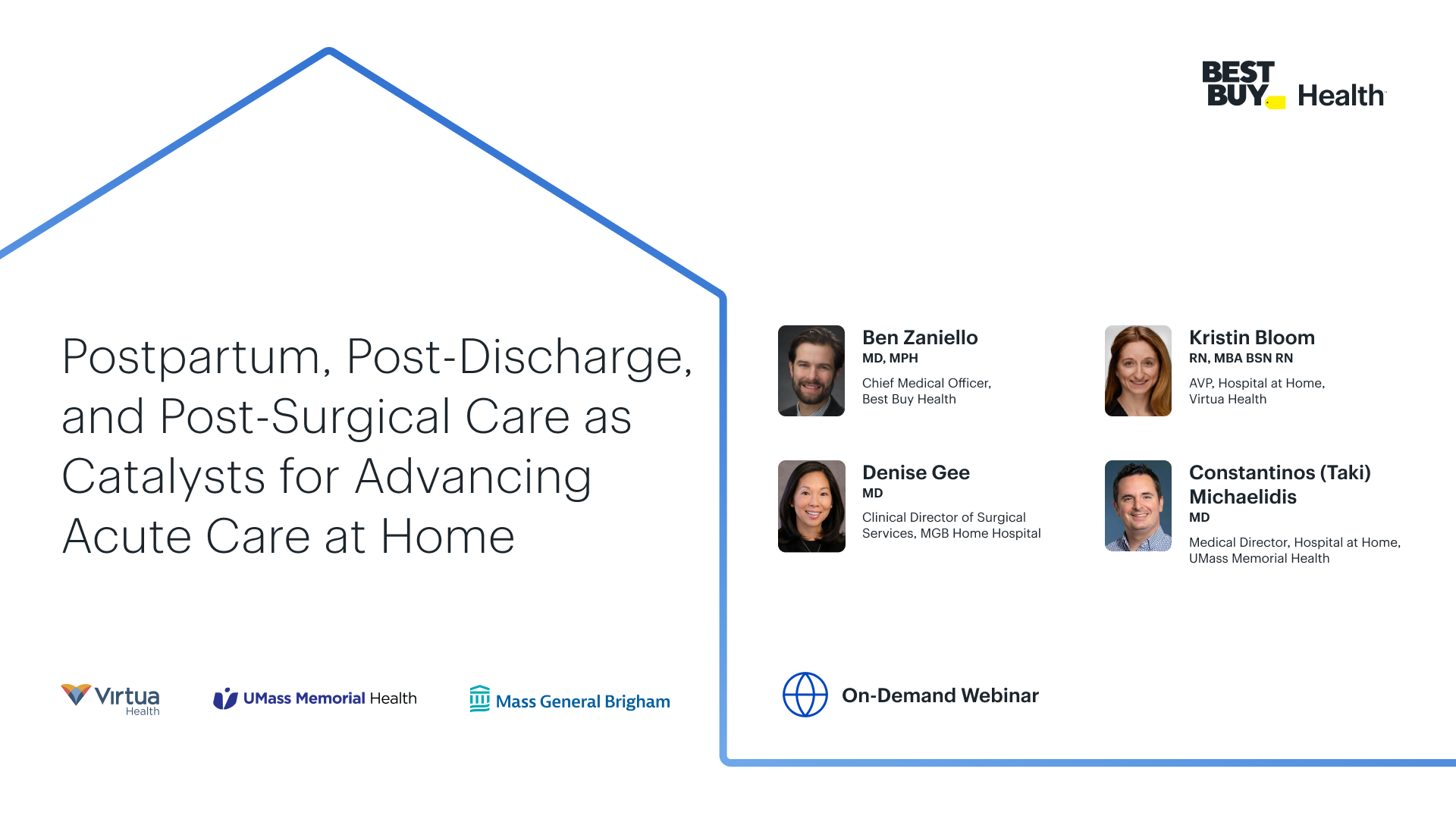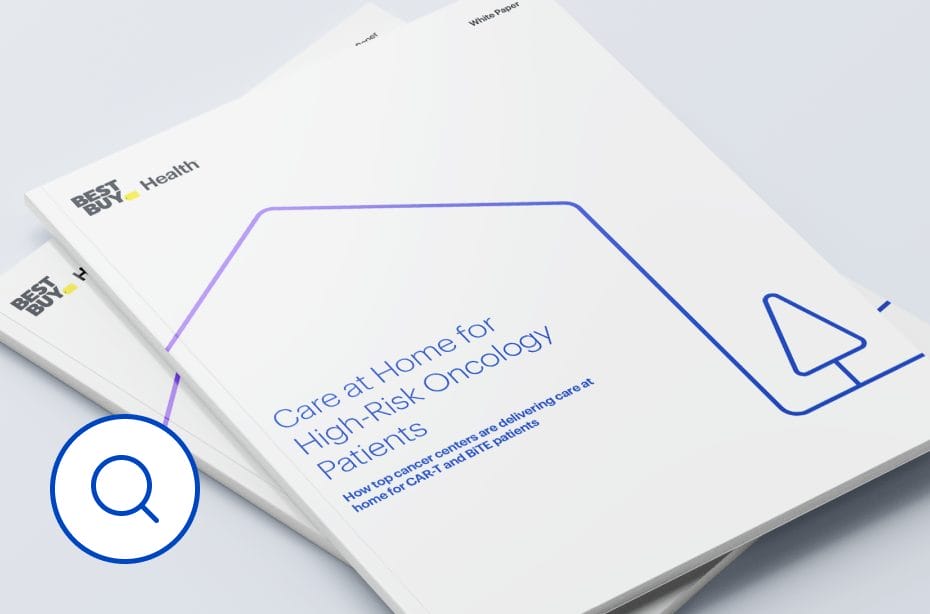The Technology Required for Excellent Remote Care Delivery
As remote care models become increasingly prevalent for healthcare organizations, some clinical and IT teams are noticing the technology features they wish they had. In our recent white paper on Remote Care Delivery, we revealed the top product features health system leaders wish their remote care solution included. In this post, we’ll dive into each of those a little bit further.
#1 AI-Driven Algorithms
AI in healthcare has received a lot of attention over the past few years, unfortunately, much of the discussion has been filled with lofty ambitions with little direction. But the opportunities for AI to really make a difference in care delivery and clinical decision making are starting to coalesce, especially within remote care models.
29% of survey respondents said they wished their remote care technology included AI-driven algorithms.
Algorithms are becoming critical for remote care delivery because they provide the key to actionable patient data. Without them, it can be difficult for clinicians to aggregate large amounts of changing data at scale. Smart algorithms power actionable alarms that enable care teams to identify who needs attention and why.
Current Health Clinical Algorithms
Our proprietary, FDA-cleared, formula identifies health deterioration based on highly accurate vital signs and patient-reported outcomes captured in the home setting. Our proven alarms monitor sustained changes across multiple vital signs and can be modified at the individual and population level.
Our algorithms and alarms empower clinicians to identify early signs of patient deterioration between typical clinical check-ins. The highly sensitive and specific nature of the alarms reduce the burden on clinical staff.
“The safest and most effective AI in healthcare right now is AI that’s explanatory—it’s not there to make decisions, but it removes the burden of filtering vast clinical data and presents it to a human, who ultimately is the one to make a final decision and provide the human-to-human empathetic care needed.
For patients receiving care at home, this is particularly important as it takes much more time to visit patients within their homes, making smart triage and decision making crucial to ensure safety and scale.”
Stew Whiting, Chief Innovation Officer and Co-Founder, Current Health
#2 Clinical Dashboards
A meaningful dashboard is critical for scaling remote care. Without one, it can be difficult to ensure teams are aligned and that no patient’s care is overlooked. Effective dashboards deliver actionable insight into which patients need attention, care team responsibility, and reporting on key metrics.
25% of survey respondents said they wished their remote care technology featured a clinical dashboard.
Clinical dashboards allow organizations to manage a larger number of patients within the remote care program, which is critical for scaling limited resources to manage more patients at home.
The Current Health Dashboard
Our clinical dashboard provides a unified view of all patients on the Current Health platform including patient demographics, vital signs, and self-reported clinical data. Patients can be easily sorted based on risk, diagnosis, or other attributes that make it easy to identify when an action is needed. Within the dashboard, users can view and modify alerts, communicate with other users via notes or with the patient via video, and log actions taken. Standalone mobile and web applications are currently available.
A single dashboard across all patient populations enables organizations to more easily identify which patients need attention and prioritize their care. Communication within the dashboard enables a distributed, or even outsourced, care team across departments.
#3 Symptom Collection Tools
Remote patient monitoring of vital signs often forms the foundation of care-at-home programs, especially for high-acuity use cases. But holistic insight into patient health requires information that often can’t be detected by devices alone. Integrated symptom collection or eDiary capabilities boost clinical insight into lifestyle activities, pain, and other complications that might otherwise go unnoticed.
24% of survey respondents said they wished their remote care technology featured symptom collection/eDiary capabilities.
Symptom collection provides additional historical patient context that can benefit clinical decision-making. For example, pain is often difficult to detect within vital sign monitoring but can be a crucial piece of data for managing a patient’s care.
The Current Health Symptom Assessment Tool
Our symptom assessments provide real-time insight into how a patient is feeling alongside vital sign data. The logic-driven chatbot collects patient-reported outcomes through prompts tailored to the patient’s unique clinical use case. Answers are logged alongside vital signs within a patient’s record and can be integrated back into an EHR system. We can also implement an organization’s existing symptom validation tools or design custom ones for new use cases.
“As physicians, we know the importance of asking patients intentional and specific questions during visits. Daily symptom check-in prompts serve to collect that same insight, and then log the responses for asynchronous review or follow-up, improving care coordination.”
Adam Wolfberg, M.D., CMO, Current Health
#4 EHR Integration
As health systems pursue home-based care delivery models, data silos become a significant risk for inefficiency and operational complexity. Integrating appropriate data with electronic health record (EHR) systems simplifies clinical workflows and ensures a singular record of patients’ longitudinal health.
23% of survey respondents said they wished their remote care technology offered integration with their EHR system.
Integrating the remote healthcare program with their EHR system was a primary priority for UMass Memorial Health System. Learn how they tackled EHR integration and other challenges for home-based care.
Current Health’s Integrations
EHR integration increases the dashboard’s functionality by allowing our platform to transmit vital signs, health data, and patient-reported symptoms to health systems without friction. It also allows healthcare providers to enroll patients and manage their remote care experience more easily. To facilitate this, Current Health has its own HL7 and FHIR interfaces and utilizes Redox as an integration partner.
“It’s vital that an EHR integration not just record what’s happening in your remote care program, but inform it. Our bi-directional integration ensures patient clinical data is aggregated in a single place for providers and that relevant historical data is taken into account for the remote care pathways.”
Adam Wolfberg, MD, Chief Medical Officer, Current Health
How do your plans for remote patient care compare to your peers?


